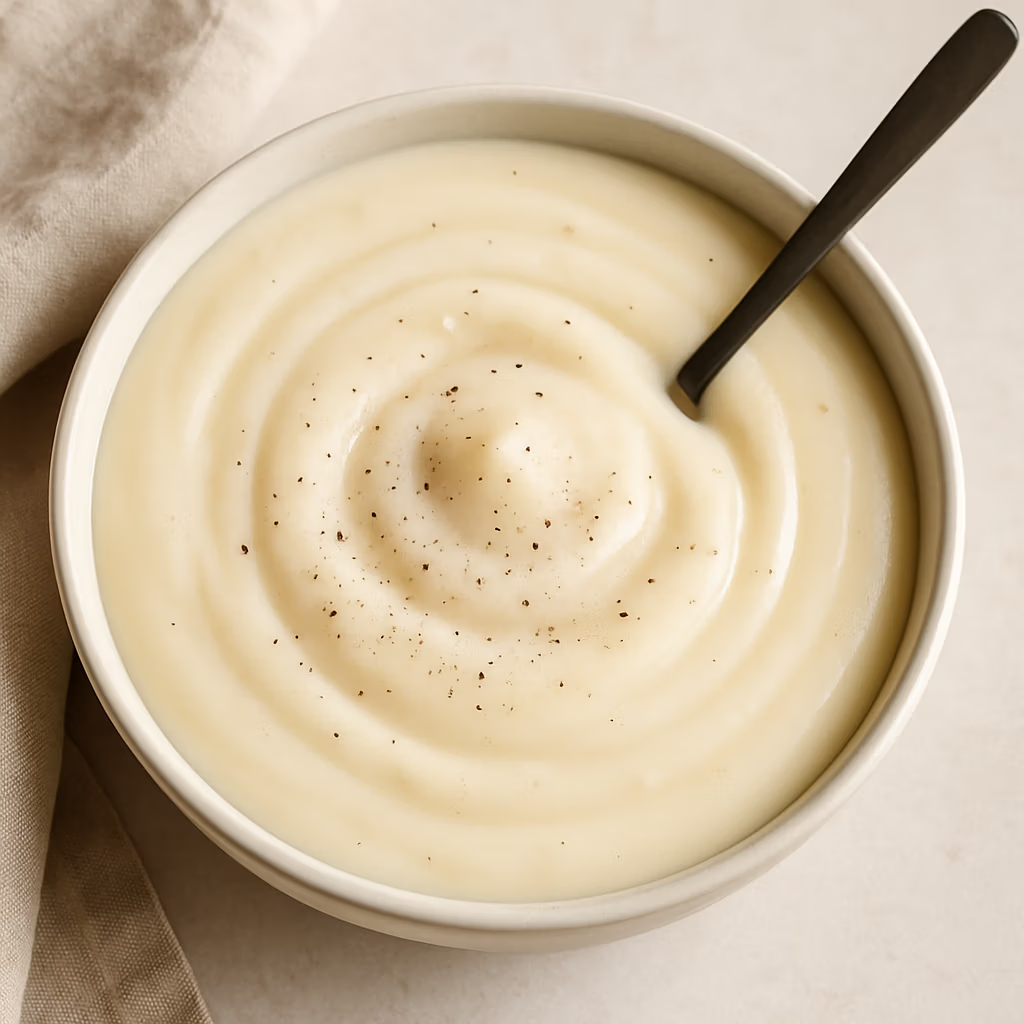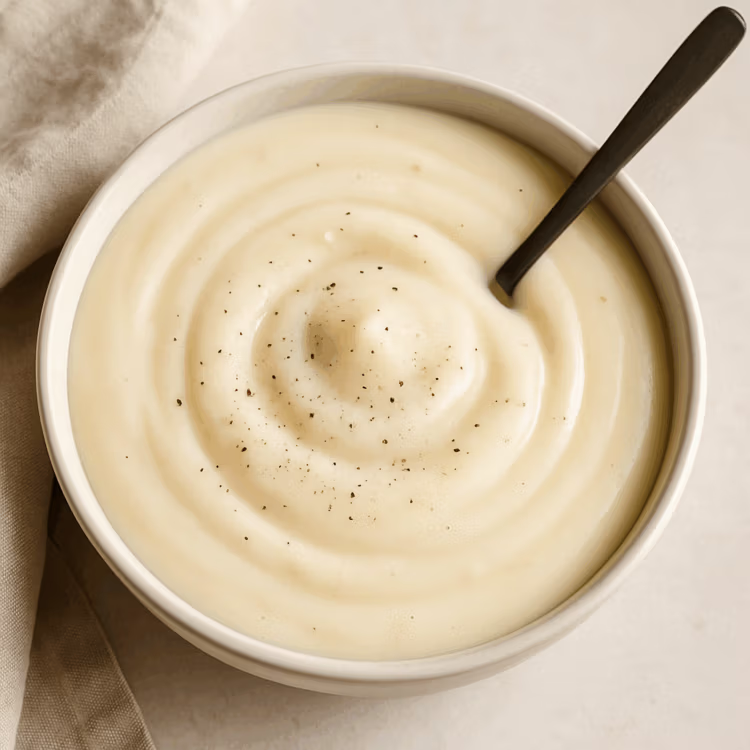Every comfort recipe has a secret. Sometimes it’s a spice. Sometimes it’s time. But when it comes to rich, creamy, velvety magic that brings a dish to life? That secret is often Bechamel sauce.
This humble white sauce is one of the five French mother sauces, meaning it’s a building block for everything from lasagna to macaroni and cheese, baked casseroles, scalloped potatoes, creamed spinach, savory bread puddings, croque monsieur, and more. In French cooking, it’s considered foundational — but in home kitchens like mine, it’s the gateway to greatness.
Once you learn how to make it, it becomes second nature — and you’ll wonder how you ever lived without it.
What Is Béchamel Sauce?
Béchamel (pronounced bay-sha-mel) is a smooth, white sauce made with just a few pantry staples:

- Butter
- Flour
- Milk
- Salt, pepper, and sometimes nutmeg
You start by making a roux — that’s just a cooked mixture of flour and butter. Then you whisk in warm milk and let it simmer until it thickens into a luscious, silky sauce.
It might sound simple (because it is), but it’s also deeply powerful in what it can do for a recipe. It adds moisture, richness, and that crave-worthy creamy texture that turns good food into comfort food.
Why Is Béchamel Called a “Mother Sauce”?
In classical French cooking, béchamel is one of five mother sauces — the essential bases from which dozens of other sauces are born. The other four are:
- Velouté
- Espagnole (brown sauce)
- Hollandaise
- Tomato sauce
These sauces are like the OGs of the culinary world. Once you know them, you can create almost anything.
Béchamel in particular is the mother of sauces like:
- Mornay (béchamel + cheese — think mac and cheese or au gratin potatoes)
- Soubise (béchamel + sautéed onions)
- Mustard cream sauce (béchamel + Dijon)
- Cheese soufflés, creamy pastas, and so much more
This is the sauce that chefs lean on, but it’s also so easy, a home cook can master it in one try.
Why I Use Béchamel Sauce in My Lasagna
Let me tell you something — once I added béchamel to my lasagna, I never looked back.
In my Classic Homemade Lasagna Recipe, I include béchamel as an optional layer between the ricotta and mozzarella. It doesn’t replace the tomato sauce or the meat — it enhances it. Béchamel brings:
- Creaminess
- Moisture (no more dry noodles!)
- Melt-in-your-mouth texture that makes each bite luxurious
You don’t have to use a ton — just a thin layer in the middle or drizzled into your ricotta mix, and the entire lasagna becomes elevated.
It’s like giving your dish a cashmere blanket to wrap itself in.
How I Use Béchamel In My Kitchen
- Lasagna – the obvious favorite
- Baked mac and cheese – hello, Mornay sauce
- Creamy vegetable gratins – pour it over roasted cauliflower or green beans, top with cheese, and bake
- Breakfast casseroles – add it to eggs, sausage, potatoes… perfection
- White chicken enchiladas – yes, yes, and yes again
- Chicken pot pie base – use it instead of canned cream soups
Once you master the béchamel base, the possibilities are endless.
Storage + Make-Ahead Tips
Béchamel can be made ahead and stored!
- Cool completely, then transfer to an airtight container
- Store in the refrigerator for up to 3 days
- Reheat gently over low heat, whisking to loosen
- Add a splash of milk if it thickens too much
Pro tip: press plastic wrap directly on top before chilling to prevent a skin from forming.
Affiliate Tools I Use for Béchamel
(This post contains affiliate links — thank you for supporting Camille’s Comforting Cuisine!)
- Asety Chef Knife (for prep work on veggies that go with the sauce) → Amazon
- Copper Chef Titan Pan (perfect for making roux and simmering sauce) → Amazon
- Stainless Steel Whisk – because a good whisk = no lumps → [Amazon Link]
- Food Prep Gloves – especially when I’m prepping meat, garlic, or dairy → Amazon
Final Thoughts From My Kitchen to Yours
Don’t let the French name fool you — béchamel is just a simple, buttery white sauce that makes food taste rich, warm, and fancy without the fuss.
Once you’ve made it once, you’ll feel like a whole chef. You’ll pour it into casseroles, fold it into pasta, layer it into lasagna, and just know — you did something special.
It’s the kind of sauce that brings people back to the table.
And isn’t that what comfort cooking is all about?


